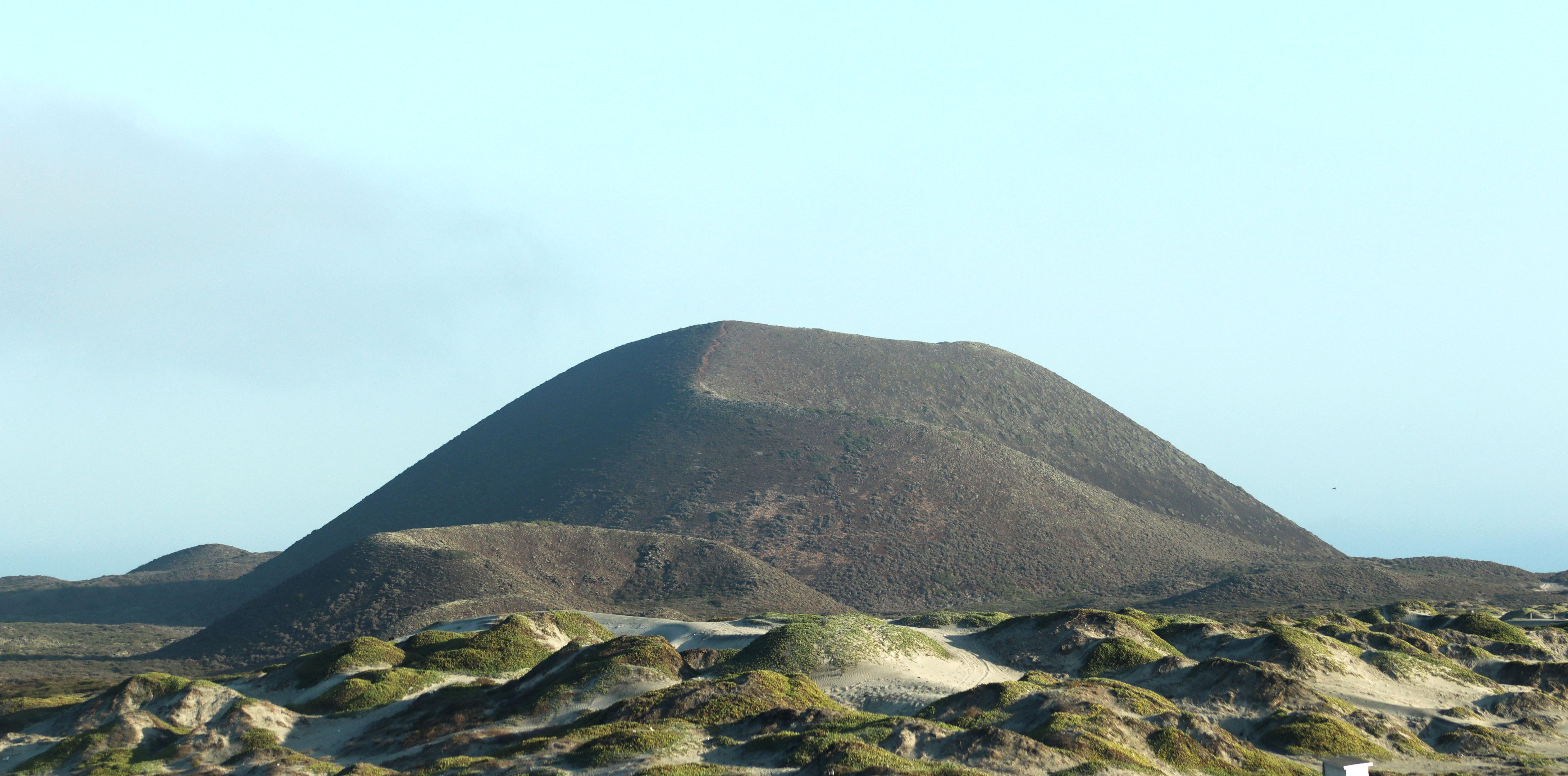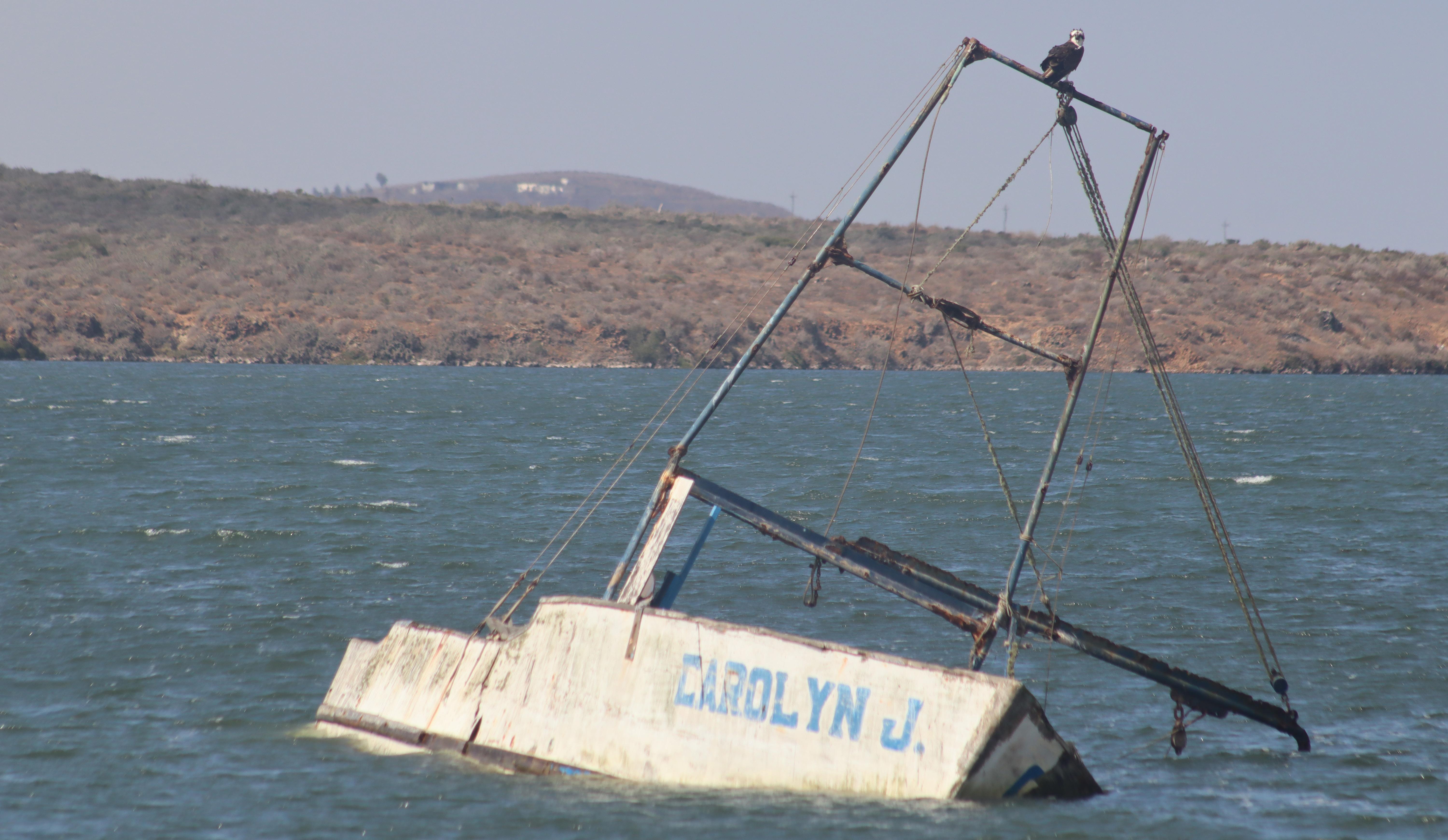
5 minute read
Punta Mazo Nature Reserve
By Sofía Garduño
When I arrived in Ensenada 10 years ago, the inhabitants of the port talked about San Quintin as a desolate and sad town, something like Juan Rulfo's Comala, a place ruled by the wind and by ghosts. I had to go see it with my own eyes to discover that these images could not be further away from reality.
Advertisement
Once one ventures into the bay, everything changes. A few meters from the Transpeninsular highway and after crossing the fields of cucumber, raspberry, eggplant, strawberry and tomato, the landscape, the open skies, the 12 volcanic cones and the mist of the sea hugs you tightly and welcomes you to a wild and misunderstood paradise, because very few people take the time to get to know it thoroughly.

Coastal dunes and volcanic cones at Punta Mazo’s entrance. Photo by Sofía Garduño.
On several occasions, I visited different places in the bay and each time was a new discovery. I saw ospreys in search of their next prey, barn owls watching me curiously from a tree in broad daylight, kangaroo rats that used the night as a shelter to go unnoticed. But it was not until 2020, the year of the first global pandemic in history, that for the first time I had the opportunity to live for a week in the Punta Mazo Nature Reserve, and I was the happiest woman on Earth. Our mission was to work as park rangers and understand the problems facing San Quintin.

A barn owl looking at me with curiosity in broad daylight. Photo by Sofía Garduño.
Natali, Mariana and I settled in El Refugio, located a few meters from the entrance to the reserve, and we immediately started seeing everything with new eyes. In the mornings, the same group of quails took exactly the same route around the house as a uniformed army squad of impeccable routine. At night, mice would make us startle and burst into laughter by running from side to side as we walked to the restrooms or made a surveillance round. Every sunrise and sunset were unique, the texture of the sky and its colors would never be the same again.

A black-crowned night heron resting in a tree. Photo by Sofía Garduño.
As we walked through the sand bar and cleaned up the trash, we observed the perfect flight of the snowy plover and the least tern. We learned that the coastal scrub and dunes were not simple sand mounds or weed, but a complex and delicate home inhabited by plants that can only be found in this region, such as the Antony's liveforever with a poetic and vital name, the strawberry cactus and the Santa Barbara milkvetch, or my beloved sand verbena, a succulent with purple flowers that likes to live in the dunes, in extreme conditions of low humidity and high salinity, yet it flourishes as no other plant.

I also learned that there was a Baja California legless lizard that took the "Look ma, no hands!" to a whole other level, and that would surely leave Darwin astonished if he were still among us. I was in the home of the Baja California whiptail, a lizard with vibrant colors and a design on the same level or even above the haute couture of Paris. We had to walk carefully because the Baja California rattlesnake was also in its home, and as a great warrior it would defend its territory without hesitation. Sometimes, it warns you "Watch out, I have fangs and I will not hesitate to use them", and other times one passes in such a hurry that it does not have time to tell you that it is beautiful but lethal. For this reason, I have always believed that it is important to enter nature slowly and with respect so that you give it time to guide you. I remember that at night, we would listen to the coyotes, laughing quietly and I also laughed with them when remembering that before we left Ensenada, my colleagues warned me about a “wolf” that lived in the Southwest volcano and ate women that were my age. I thought: What a demanding wolf, I don't think there are many women my age around here, he will starve! The shelly deposits, as "windows to the past", remained in place as evidence of the passage of hunter-fisher-gatherers who lived in these lands hundreds of years ago and the ornamental objects that they made with abalone shells reminded us that we have always found beauty in our surroundings throughout human history.

The Punta Mazo Nature Reserve was certified in 2014 as an area destined for conservation, and it covers 830 hectares of pure magic. For this reason, my heart breaks when I think of all the garbage that we collected, and that reappeared the next day in the same place as if we had not cleaned anything; when I think that the extraction of cobble and volcanic stone is strongly affecting its coasts and the geomorphology of the territory and therefore, the species that live there; when I think about the coastal dunes being destroyed by motorized vehicles or that many bird species are flying away due to the disturbance of their natural habitat. We just need to open our eyes to understand that the natural world is our home and our responsibility, and that we must cherish it and take care of it with gentleness, because procuring its balance is extremely delicate.
I felt very fortunate to be able to be immersed in nature during that week and more, being in the middle of a pandemic. We felt safe and free, and it was the perfect setting to witness the birth of a great friendship between three co-workers who did not know each other and who came out of there being stronger women with a clearer mind. Nature does that in people, it shows us the way and gives us all the answers. We just need to stop a bit to contemplate the miracle that this planet is.

An osprey resting on an abandoned boat. Photo by Sofía Garduño.
Punta Mazo Nature Reserve
Location
San Quintin Bay, Baja California
Area
830 hectares (2050 acres)
Date of certification
October 24, 2014
Type of certificate
Area Voluntarily Destined for Conservation

Sand verbena on the coastal dunes of Punta Mazo. Photo by Sofía Garduño.









